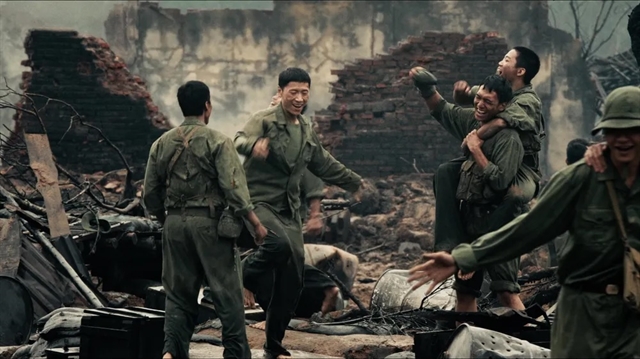Following a record-breaking first half of 2025 with eight Vietnamese films surpassing the VNĐ100 billion revenue mark, local filmmakers are entering the latter half of the year with renewed confidence and high hopes for another leap forward.

'Mưa Đỏ' (Red Rain) movie is expected to gain significant attention from the public. Photo sgpp.org.vn
HCM CITY – Following a record-breaking first half of 2025 with eight Vietnamese films surpassing the VNĐ100 billion (US$3.9 million) revenue mark, local filmmakers are entering the latter half of the year with renewed confidence and high hopes for another leap forward.
The second half of 2025 is set to feature a diverse range of genres and storylines, though horror films continue to dominate the market.
“In my opinion, in the last six months of this year, Vietnamese films will continue to outshine foreign ones, with several interesting titles slated for holiday releases. More importantly, we’ll see greater diversity in genres, scales, and directors,” shared producer Tường Vi of V Pictures.
This outlook is supported by the already announced release schedule.
Among the highlights is Mưa Đỏ (Red Rain), inspired by the 81-day heroic defense of Quảng Trị Citadel in 1972.
Another notable title is Tử Chiến Trên Không (Death Battle in the Air), the first Vietnamese film to explore the theme of hijacking.
It has generated considerable buzz thanks to a star-studded cast featuring Thái Hòa, Kaity Nguyễn, Thanh Sơn, Xuân Phúc, Võ Điền Gia Huy, Trần Ngọc Vàng, and Ma Ran Đô.
The latter half of 2025 also marks a strong comeback for international co-productions, with three Vietnamese-Korean collaborations, including Mang Mẹ Đi Bỏ (Leaving Mom), Điều Ước Cuối Cùng (The Final Wish), and Cải Mả (Reburial).
There's also Cô Dâu Ma (The Ghost Bride), a Việt Nam – Thailand collaboration.
These films stand out thanks to high-profile partnerships.
Mang mẹ đi bỏ features actors from both Korea and Vietnam and is directed by Mo Hong-jin, best known for The Final Wish of Prisoner 2037.
Meanwhile, Điều Ước Cuối Cùng marks the first co-production between a Vietnamese studio and Contents Panda, the company behind hits like Train to Busan, Peninsula, and Handsome Guys.
Cải mả draws inspiration from the traditional Vietnamese reburial ritual, while Cô Dâu Ma weaves spiritual elements from both Việt Nam and Thailand into a narrative that spans from HCM City to Chiang Mai.
Toward a sustainable film industry
Looking at both released and upcoming films, two major issues stand out in Việt Nam’s film industry.
First, although the number of VNĐ100 billion box-office hits is at an all-time high, the issue of quality remains a pressing concern.
Inconsistent standards, particularly weak screenwriting, continue to spark debate.
The key challenge now is to ensure consistent quality in Vietnamese films and move away from relying on box-office luck.
Second, the dominance of horror films also warrants reflection.
Many horror films have relatively low production costs but high earning potential, especially among young audiences.
That’s why this genre continues to dominate late 2025 with titles like Nhà Ma Xó, Cải mả, Làm Giàu Với Ma 2 (Betting with Ghost 2), Cô Dâu Ma, Heo Năm Móng (Five-Clawed Pig), and Hoàng Tử Quỷ (Demon Prince).
On the bright side, the genre’s success has inspired greater creativity among filmmakers.
Visual effects and sound design have improved, and there is a growing effort to explore new stories, from folklore-based narratives to novel concepts.
However, this trend may come at the expense of other genres such as comedy, drama, romance, action, sci-fi, and historical films, which risk being sidelined due to lack of investment.
Moreover, the horror genre faces potential saturation, which could lead to declining quality and erode audience trust.
“Quality remains the deciding factor. Audiences are willing to pay and help a film enjoy long-lasting success only when they’re truly satisfied. Of course, filmmakers also need to understand current viewing trends, explore new themes, and, most importantly, find fresh ways to tell their stories,” Vi emphasised.
Another vital aspect is the need to strengthen marketing and promotion.
In today’s information-saturated world, even quality films will struggle to reach mass audiences without strong publicity campaigns.
That said, there’s also a growing issue of imbalance, as some studios focus heavily on promotion but neglect storytelling.
Without a balance between the two, Vietnamese films risk falling into the trap of “big build-up, weak payoff,” which could have unpredictable consequences. VNS